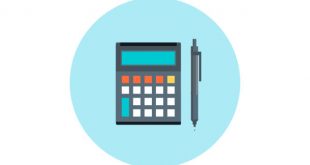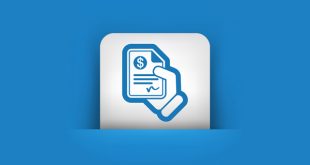 2010… Another year passed by… the first decade of the millennium is over. How will you remember 2010? What happened in these 365 days that made the year significant? Natural disasters, information leaks, technological breakthroughs…
2010… Another year passed by… the first decade of the millennium is over. How will you remember 2010? What happened in these 365 days that made the year significant? Natural disasters, information leaks, technological breakthroughs…
2010 was the year of natural disasters. Different parts of the world were shaken by intense earthquakes: Haiti, Chile, China and Sumatra were home to hundred thousands of dead and millions of displaced people. Volcanic eruptions and ashes in Indonesia and Iceland threatened the lives and security of the environment and impacted the air traffic in the world. It was one of the rare examples of how the world was physically connected. I even met a few tourists who were stuck in Singapore waiting to travel back home to Northern Europe. Russia’s forests went on fire and wilder habitats seized to exist. Pakistan was hit by deteriorating floods caused by heavy monsoon rains. As a result, 1600 people were killed and almost one million were displaced. In sum, natural disasters worsened the situation in the underdeveloped regions. According to Food and Agriculture Organization (FAO), 925 million people – 13.6 percent of the world population – are hungry in 2010. 578 million from Asia Pacific; 239 million from Sub-Saharan Africa are coping with hunger. Poverty, conflict, corrupted economic system and global warming are seen as the main causes of the hunger.
Besides natural disasters accidents were to be remembered: BP’s oil spill in the Gulf of Mexico – the largest oil spill recorded in history -created an environmental disaster for the people, animals and all living creatures in the area.
Ironically, UN had claimed 2010 as the international year of youth and biodiversity. Ecosystems, living beings and children were the ones to bear the burden.
In the midst of information age, similar to natural disasters certain revelations had trembling effects on the world’s media, policymaking and international affairs. Wikileaks, an international non-profit organization founded by an Australian national, Julian Assange, whose aim is to publish classified documents for public knowledge, started a new frontier for activism. The webpage published 90.000 leaked documents concerning the war in Afghanistan between 2004 and 2010. Wikileaks’ online publishing impacted the fundamentals of journalism as confidential documents were made openly accessible to the public in a raw format.
Instead of being a rival to the traditional media, Wikileaks embraced major international newspapers by sharing the leaks in advance so that they can generate news stories. In other words, he created a win-win scenario for Wikileaks, traditional media and the public. The media covered these leaks and wrote commentaries while Wikileaks got the attention of the public by the aid of conventional media. Some said these leaks were the revolution of forced transparency. Others thought these sources were a boon to journalism and would shift the way we received information, followed leads and prepared stories. Another blow of leaked documents came in November: 250.000 American diplomatic cables of which 100.000 were marked confidential. The ongoing debates were heated by the arrest of Assange for a sexual harassment case and followed by his release.
What makes Wikileaks unique is not only its content but its secure technology. Assange had said that if something happened to himself or Wikileaks, the key to the encrypted “insurance” file would be released to the public. Of course no one knows what the file contains!
Technology has been a hot topic in 2010. When I asked a question on Q&A of Linkedin: “2010 was the year of …………… in the field of technology. How would you complete this sentence?” I got 14 answers:
Cloud computing was the undisputed winner. iPad, Wikileaks, Opensource, Stuxnet were among the other popular answers.
Cloud computing was the miracle that made hardware obsolete and carried information technology to the cloud. Independent from specific location or physical infrastructure, the system gave users the ability to compute data, connect within the network and utilize software as a service (SaaS). This led to a natural decrease in IT costs and pricing was designed according to the users’ needs. The prior security concerns diminished with complex security advances.
To grasp the mind-blowing growth of the cloud computing, a recent article on the Economist asks this question: ‘How big is the computing cloud?’ One of the most popular services in the cloud, Software as a Service (SaaS) includes web-based applications such as Gmail and Salesforce.com. The latter delivers services of customer relationship management (CRM). In a new study, Forrester Research estimates that SaaS generated sales of $11.7 billion in 2010.
Platform as a Service (PaaS) takes operating system into the cloud, it allows developers to write applications for the web and mobile devices. Offered by Google, Salesforce.com and Microsoft, the revenue of PaaS is estimated to be around $311 million. Infrastructure as a Service (IaaS) offers basic computing services that ranges from number crunching to data storage. IaaS lets customers combine these services to build highly adaptable computer systems. GoGrid, Rackspace and Amazon Web Services are among the market leaders. Although it is more difficult to calculate the revenue of IaaS, it is expected to exceed $1 billion in 2010. Pretty impressive numbers…. Imagine the sales volume in a decade. Forrester predicts that it will grow to nearly $56 billion by 2020.
One of the most interesting developments in 2010 took place in the field of computer viruses. Iranian nuclear power station was infected by a cyber worm called Stuxnet. The worm didn’t delete files or hack the servers but it sought the specialized electronics in an uranium centrifuge and sabotaged them. This was a concrete cyber attack that presumably delayed Iran’s nuclear plans by 2 years.
A pleasant technological surprise was the iPad by Apple. During the launch of the tablet in April, all tech lovers were skeptical. Nobody expected this entertainment-oriented computer to be a hit. First, iPad was adopted by technology enthusiasts for personal use: People started using iPad to read books and newspapers, surf on the net, listen to music, watch films or play games. Then, corporations found themselves encouraging the use of iPads in the workplace in order to increase productivity, reduce paperwork, and increase client satisfaction. iPad sales is expected to reach 10 million in the end of the year. Apple estimates that iPad sales will reach 65 million in 2011!
2010 was the year of technology – whether it is in the cloud, computer viruses, tablets or media, technology became vital in our lives.
Happy New Year!
 Ela Erozan Gürsel writes a weekly column named “Değişim Yelpazesi ” on global business trends for Dünya Gazetesi on behalf of Datassist for almost two years. Her feature topics include: green energy; climate change; impacts of financial crisis on companies, sectors and regions; innovative technologies in sciences, human resources and management; social networks transforming business and politics; changing dynamics of marketing and branding.
Ela Erozan Gürsel writes a weekly column named “Değişim Yelpazesi ” on global business trends for Dünya Gazetesi on behalf of Datassist for almost two years. Her feature topics include: green energy; climate change; impacts of financial crisis on companies, sectors and regions; innovative technologies in sciences, human resources and management; social networks transforming business and politics; changing dynamics of marketing and branding.
She also writes articles for international magazines published in Singapore.
Prior to her writing career, she worked at Datassist as a Project Manager in a project that combines human resources and mobile communications with the aim to connect blue-collar workers and employers through mobile phones. Before engaging in this exciting project, she was in pharmaceutical sales working for a multinational company. She graduated from American University, Washington, DC, majoring in International Studies with a concentration on International Business and Europe. She worked in Washington D.C. as an Account Manager at a boutique telemarketing firm that specializes in fund raising and publication renewals. She speaks Turkish, English, French, and Spanish. She currently resides in Singapore with her husband.
 Turkish Labor Law
Turkish Labor Law



